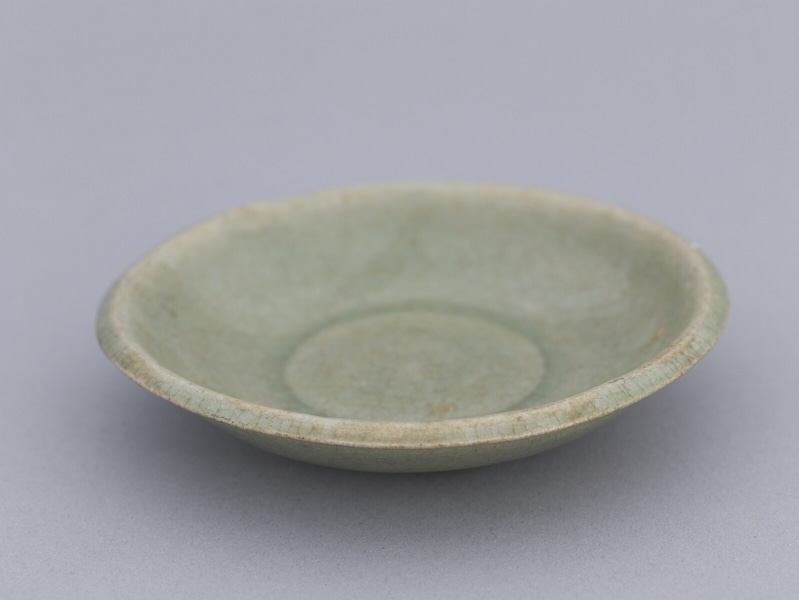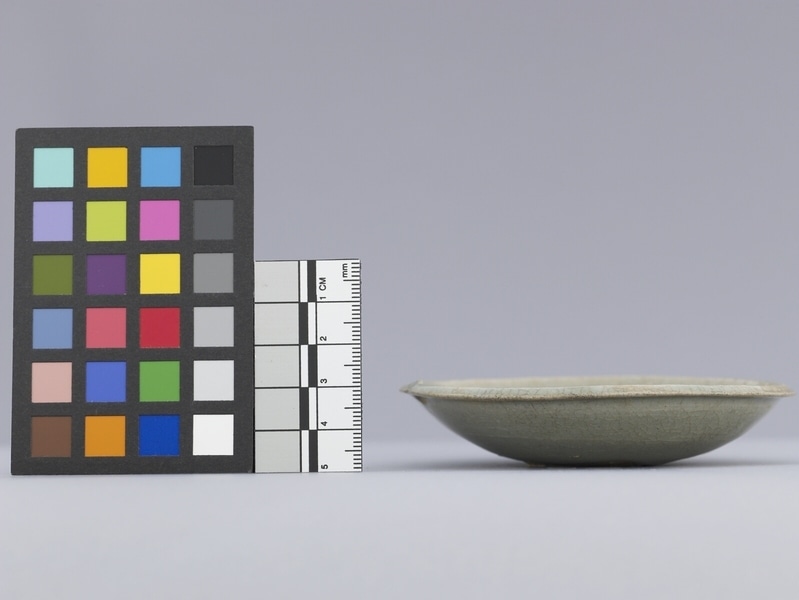Dish Item Number: N3.83 a-d from the MOA: University of British Columbia



Description
Plain light green crackled finish. Incised circle near centre, with sightly raised centre. Traces of four spur marks made of clay at the bottom. Unmarked.
History Of Use
This type of a small celadon dish (jeopsi; 접시; 楪匙) with a slightly curved rim and a shallowly carved inner bottom was produced from the twelfth century until the mid-thirteenth century in many Goryeo kilns. All types of pottery produced during the Goryeo dynasty (고려; 高麗; 918–1392) are referred to as Goryeo dojagi (Goryeo ware; 고려도자기; 高麗陶磁器). Celadon wares (green-grey glazed ceramics), known as Goryeo cheongja (고려청자; 高麗青磁), were the main type of ceramic produced during this period in Korea. Celadon originated in China, and Goryeo potters learned the techniques from the traditions of the Song dynasty (960–1279). The Buan (부안군) and Gangjin (강진군) regions in Jeolla Province (전라도) became the major production centres by the mid twentieth century, and Gangjin remains the production centre of the revival of Goryeo cheongja and modern celadon.
Narrative
Collected by J. H. Morris while he was chief engineer for Seoul Railway, Korea.
Item History
- Made in Korea between 1100 and 1250
- Collected between 1899 and 1939
- Owned by Marion Stephan before August 1964
- Received from Marion Stephan (Donor) during August 1964
What
Who
- Culture
- Korean
- Previous Owner
- Marion Stephan
- Received from
- Marion Stephan (Donor)
Where
- Holding Institution
- MOA: University of British Columbia
- Made in
- Korea
When
- Creation Date
- between 1100 and 1250
- Collection Date
- between 1899 and 1939
- Ownership Date
- before August 1964
- Acquisition Date
- during August 1964
Other
- Item Classes
- ceramics
- Condition
- good
- Accession Number
- 0113/0102 a-d